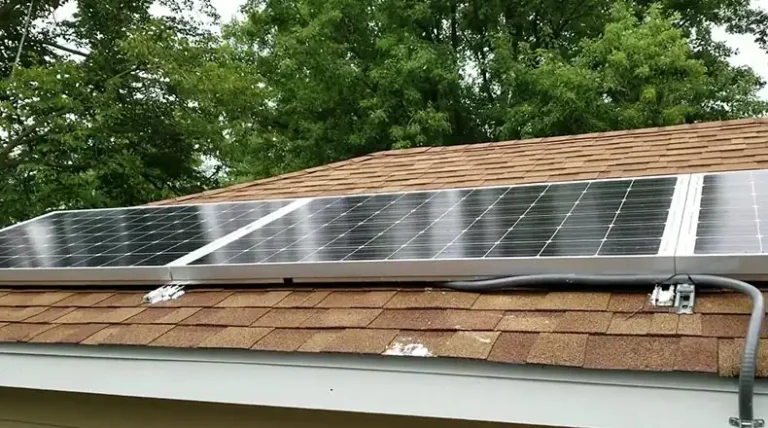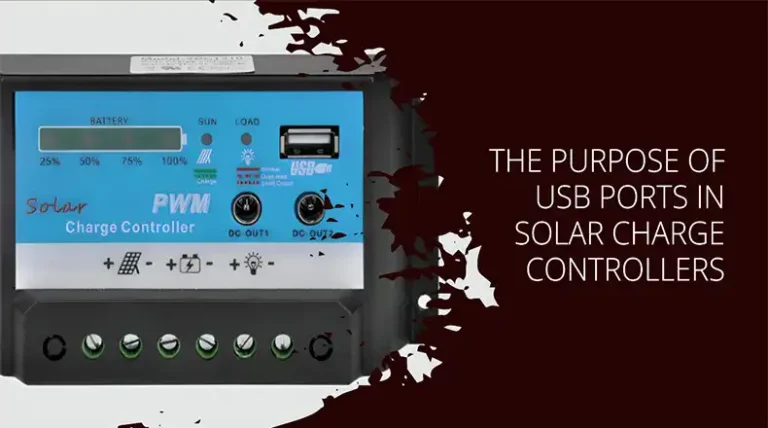How to Wire Two Solar Charge Controllers? Easy Guideline
The purpose of a solar charge controller is to regulate the power that your solar panels produce. It also prevents your battery from overcharging. Normally, a single charge controller should be enough for most systems. However, there are certain situations where connecting two charge controllers to one solar panel might be necessary, especially if you want to add more solar panels to your existing system or you want to separate some of the solar panels.
In this article, we’ll explain what purpose a charge controller serves in a solar power plant system and how to wire two solar charge controllers.

How Do I Wire Two Solar Charge Controllers?
Charging controllers are especially useful when you are using an inverter to charge your batteries. They increase the charging efficiency of the solar panels and make the whole process safer. Nowadays, solar controls allow for multiple solar stacks.
Before wiring two charge controllers, it’s crucial to understand their working principle.
How Charging Controllers Work
Charge controllers detect battery internal resistance and adjust the charging current accordingly. When the battery is low, charge controllers enter bulk charging mode. As resistance increases, the charging current decreases, indicating a nearly full battery.
Using multiple charge controllers to charge the same battery speeds up charging without competition. All controllers sense the battery’s internal resistance and contribute equally. Charge controllers can be programmed with a cutoff voltage to stop charging when a predetermined voltage is reached. Different controllers may have different cutoff voltages, affecting their charging behavior.
Voltage drop in longer wires can cause one charge controller to enter float mode earlier than another due to increased resistance. To prevent excessive heat generation, charge controllers reduce power input if the charging current becomes too high, altering the battery’s internal resistance.
Wiring Two Charge Controllers
Let’s assume that you want to connect two sets of solar panels with separate charge controllers to a single battery. This configuration is useful when you have panels with different ratings.
This setup can also be applied to boats, where one charge controller may be in the shade while the other receives direct sunlight. The shaded panel will deliver reduced power, similar to panels wired in parallel. Below is a diagram of how you can wire multiple solar charge controllers to the same battery using a parallel connection.

You can use either PWM or MPPT charge controllers for this setup. The type of charge controller doesn’t matter, and you can even combine PWM and MPPT controllers to charge the battery.
Synchronizing Two Solar Charge Controllers
There is no need for communication between the charge controllers when using multiple units. For flooded lead-acid batteries, frequent equalization can be problematic if multiple charge controllers are connected. To avoid this, disable the equalization function on all but one charge controller.
Some models, such as Victron BlueSolar and SmartSolar, can communicate with each other using built-in Bluetooth or VE.can port for larger systems. This communication allows only one charge controller to balance the battery cells, typically for lead-acid batteries.
Both charge controllers will deliver their maximum current to the battery.
Maximum Charging Current
When using multiple controllers, you need to consider the maximum charge current based on the battery type. Lead-acid batteries should be charged at a low C-rate (0.2 times the Ah capacity), while lithium batteries can handle higher C-rates (1 times the Ah capacity). Ensure the charging current doesn’t exceed these rates to prevent heat dissipation or limitations imposed by the battery management system (BMS). So, make sure that the battery capacity (Ah) is sufficient to accommodate an additional charge controller.
Reasons to Use Multiple Charge Controllers
Knowing how to wire two or more solar charge controllers, let’s get into the reasons when and why you should consider connecting multiple controllers to the same battery bank.
1. Increasing the Number of Solar Panels
If you are willing to expand your solar system with additional panels, incorporating multiple charge controllers is a step in the right direction. By doing so, you’ll have increased power available during the morning and additional power that can be stored in the battery bank. Also, if your existing charge controller has reached its capacity, you’ll require an additional one to accommodate any extra solar panels.
2. Using Solar Panels with Different Ratings
In certain situations, you may find it necessary to connect solar panels with different specifications to your charge controller. However, this combination of different specifications is not efficient and can result in a loss of total power generated by your existing array.
Luckily, you can resolve this issue by employing multiple charge controllers. By dividing the solar panels into multiple arrays with identical specifications, you can completely eliminate the loss in power production. This allows for optimal utilization of solar panels and maximizes overall efficiency.
3. Different Shading Conditions Throughout the Day
Let’s face it. shading condition changes throughout the day, no matter where you live. So, in order to maximize efficiency, you need to distribute the panels in different locations. But, if they are all connected to the same charge controller, it will lead to power loss in the whole setup.
The most practical solution here is to use a separate charging controller for the panels set in different locations.
4. Increasing Battery Capacity
If you already own an established solar power system, then there’s a good chance that you are wasting a lot of power since not all of it can be stored, due to a limited battery bank capacity. So, you are eventually going to need to increase your battery bank capacity.
When you do so, having multiple charge controllers is a good option, since it’ll provide higher current to the batteries with the same voltage.
Overall, multiple charge controllers are essential components of a solar power system, ensuring reliable and efficient power supply as needed.
FAQs (Frequently Asked Questions and Answers)
Can I use MPPT and PWM together?
Theoretically, you can. But you have to adjust the voltages to make sure that you receive the right charging.
Which is better PWM or MPPT?
The main difference between PWM and MPPT charge controllers lies in their efficiency levels. MPPT devices are known to be more efficient compared to PWM devices, boasting a 30% increase in charge efficiency. In PWM systems, it is crucial to ensure that the panel voltage and battery voltage are matched appropriately.
Conclusion
Using multiple charge controllers in the same system can increase your panels’ efficiency greatly. It can also help you increase your battery bank capacity and make sure that you get the most out of your solar power system in all weather conditions. Just use a parallel connection with two or more charge controllers to connect them with the battery bank.






